How Much Does Rendering Cost in 2024?
Rendering your home or building is a significant undertaking that enhances the aesthetic appeal and plays a crucial role in protecting against the elements. With evolving technologies and materials in place, the cost of rendering in 2024 has seen various adjustments. Understanding these costs is vital for homeowners and property developers alike, as it ensures that budgeting and planning are accurate and comprehensive. However, not just the cost of the render itself needs consideration. Several ancillary costs and factors are critical in the overall budgeting for a rendering project.
Considerations for a rendering job
When planning a rendering job, it’s important to consider the project’s full scope.
- Type of Render: Different renders offer different benefits, from aesthetic appeal to durability and weather resistance. Choosing the right type for your specific needs is crucial.
- Preparation Work: The condition of the existing wall surface can significantly affect the preparation work required before applying the new render. This could involve repairing cracks, removing existing renderings, or treating damp issues.
- Scaffolding: For two-storey buildings or higher, scaffolding may be necessary to access all exterior areas safely. The cost of scaffolding can vary widely based on the complexity and duration of the project.
- Waste Management: Proper disposal of any waste material is essential for keeping the site clean and adhering to environmental regulations. This includes the removal of old renderings, packaging, and unused materials.
- Labour Costs: The expertise and experience of the tradespeople carrying out the work will also influence the cost. High-quality workmanship is essential for a render that looks great and lasts, so it’s important not to skimp on skilled labour.
- Additional Finishes: Depending on the render chosen, additional finishes or treatments might be required to achieve the desired look and performance.
In this blog, we’ll explore the costs per square metre for different renders on our website. This includes silicone, monocouche, acrylic, and lime renders. We aim to provide a comprehensive guide that will help you understand the cost of the materials.
Silicone render cost in 2024
Silicone render is a high-quality, breathable material renowned for its water-resistant and flexible properties. This type of render is composed of a silicone resin base, which gives it a distinct advantage over traditional renders by allowing moisture to escape from the substrate, thereby reducing the risk of dampness and mould within the walls. Silicone render is also notable for its excellent durability and resistance to cracking, thanks to its flexible nature that can accommodate minor movements of the building structure. It offers a sleek, modern finish with various colours, enabling homeowners to achieve a specific aesthetic look while protecting the exterior of their home.
The self-cleaning properties of silicone render mean it maintains its appearance for longer periods, reducing the need for frequent maintenance. Its ease of application and low maintenance requirements make silicone an attractive choice for new builds and renovation projects. It offers a long-lasting, aesthetically pleasing exterior solution that enhances the building’s thermal performance and overall value.
-
Silicone Render (EWI-075) – 25KG
Rated 4.83 out of 5From £83.99 Incl. VATFrom £69.99 Excl. VAT -
Nano Drex Silicone Render (EWI-077) 25kg
Rated 4.57 out of 5From £151.19 Incl. VATFrom £125.99 Excl. VAT -
Premium Bio Silicone Render (EWI-076) – 25kg
Rated 4.00 out of 5From £113.39 Incl. VATFrom £94.49 Excl. VAT -
Silicone Silicate Render (EWI-040) – 25kg
Rated 5.00 out of 5From £71.99 Incl. VATFrom £59.99 Excl. VAT
Acrylic render cost in 2024
Acrylic render is a type of synthetic render made from a mixture of acrylic resins and aggregates. It’s prized for its durability and flexibility, which prevents cracking over time, making it ideal for a variety of external wall surfaces. Acrylic renders are known for their vibrant colour options and finish variety, maintaining their colour and finish for years due to the render’s UV resistance.
One of the key benefits of acrylic render is its excellent adhesion to substrates. It’s also quick to dry, reducing the overall time of the rendering process. Additionally, acrylic render acts as a protective layer for the building, offering resistance to dirt, mildew, and various weather conditions.
-
Acrylic Render (EWI-010) – 25kg
Rated 4.50 out of 5From £47.99 Incl. VATFrom £39.99 Excl. VAT
Lime render cost in 2024
Lime render is a traditional building material, comprised primarily of lime mixed with sand, water, and sometimes other fibres and natural additives. Its use dates back centuries, and it is especially beneficial for older buildings and those constructed of materials that require a breathable coating.
The key advantages of lime render include its high permeability to water vapour, which allows moisture to escape from the substrate, thereby reducing the risk of trapped moisture and associated issues such as dampness and rot within the walls. This characteristic makes lime particularly suited to heritage properties and those with solid walls that need to ‘breathe’.
Lime render is also valued for its environmental credentials, as it is made from natural ingredients. It is more ecologically sound than many modern alternatives, as lime is a renewable resource that reabsorbs carbon dioxide as it cures, partially offsetting the initial carbon output from its production.
-
Lime Render NHL 3.5 (EWI-747) – 23kg
Rated 5.00 out of 5£19.94 Incl. VAT£16.62 Excl. VAT
Monocouche render cost in 2024
Monocouche render is a type of through-coloured render often applied in one coat, hence the term ‘monocouche’, French for ‘single-layer’. It’s a cementitious and polymer-modified render which typically comes pre-mixed, requiring only the addition of water before application. This render is time-efficient due to its single-layer application and provides a durable and low-maintenance finish.
One of the primary benefits of monocouche render is its aesthetic appeal. The through-colour means that the finish is consistent and won’t require repainting. It offers a crisp, chalky finish with various colour options and the potential for different textures, such as scraped or stippled, to suit various architectural styles.
The render is formulated to be breathable, allowing moisture vapour to pass through and helping to prevent the build-up of dampness within the walls. Moreover, its robust nature makes it resistant to cracking, providing a long-lasting, attractive facade to any building.
-
Monocouche Render (EWI-090) 25KG
Rated 4.80 out of 5From £14.39 Incl. VATFrom £11.99 Excl. VAT
Mineral render cost in 2024
Mineral render is breathable, quick-drying, and suitable for external walls, particularly in damp climates. Made from cement, lime, and other natural components, it offers a durable finish that can be applied even in colder weather. Its vapour-permeable nature allows moisture to escape from the substrate, preventing damp and mould growth. Mineral render requires a paint finish but provides an excellent base for silicate paints, which bond chemically to the render for a long-lasting, colourfast finish.
-
Mineral Render (EWI-060) – 25kg
Rated 3.80 out of 5£24.00 Incl. VAT£20.00 Excl. VAT£27.71 Incl. VAT£23.09 Excl. VAT
How do the renders compare?
Disseminating the costs per square metre is a useful tool for calculating the overall cost. Surveys will measure the size of your external walls in square metres. Therefore, knowing the individual cost of each render in that denomination is particularly useful.
| Render type | Size | Bag or bucket | Coverage | Cost per bucket/bag (ex. VAT) | Cost per m² (ex. VAT) |
| EWI-075 Silicone Render (1.5mm) | 25kg | Bucket | 2.4kg/m² | £70.65 | £6.78 |
| EWI-076 Premium Bio Silicone Render | 25kg | Bucket | 2.4kg/m² | £80.87 | £7.77 |
| EWI-077 Nano Drex Silicone Render | 25kg | Bucket | 2.4kg/m² | £122.49 | £11.77 |
| EWI-040 Silicone Silicate Render | 25kg | Bucket | 2.4kg/m² | £61.42 | £5.90 |
| EWI-010 Acrylic Render | 25kg | Bucket | 2.4kg/m² | £44.80 | £4.30 |
| EWI-747 NHL 3.5 Lime Render | 23kg | Bag | 15 kg/m² per cm thickness | £16.62 | £10.86 |
| EWI-090 Monocouche Render | 25kg | Bag | 25kg/m² | £10.99 | £10.99 |
| EWI-060 Mineral Render | 25kg | Bag | 2.5kg/m² | £30.56 | £3.05 |
Facebook
Twitter
LinkedIn
Your cart
Trade Account Login

We use cookies on our website to give you the most relevant experience by remembering your preferences and repeat visits. By clicking “Accept All”, you consent to the use of ALL the cookies. However, you may visit "Cookie Settings" to provide personalised consent.
Manage consent
Privacy Overview
This website uses cookies to improve your experience while you navigate through the website. Out of these, the cookies that are categorized as necessary are stored on your browser as they are essential for the working of basic functionalities of the website. We also use third-party cookies that help us analyze and understand how you use this website. These cookies will be stored in your browser only with your consent. You also have the option to opt-out of these cookies. But opting out of some of these cookies may affect your browsing experience.
Necessary cookies are absolutely essential for the website to function properly. These cookies ensure basic functionalities and security features of the website, anonymously.
| Cookie | Duration | Description |
|---|---|---|
| __stripe_mid | 1 year | This cookie is set by Stripe payment gateway. This cookie is used to enable payment on the website without storing any patment information on a server. |
| __stripe_sid | 30 minutes | This cookie is set by Stripe payment gateway. This cookie is used to enable payment on the website without storing any patment information on a server. |
| _GRECAPTCHA | 5 months 27 days | This cookie is set by the Google recaptcha service to identify bots to protect the website against malicious spam attacks. |
| apbct_cookies_test | session | CleanTalk sets this cookie to prevent spam on comments and forms and act as a complete anti-spam solution and firewall for the site. |
| apbct_page_hits | session | CleanTalk sets this cookie to prevent spam on comments and forms and act as a complete anti-spam solution and firewall for the site. |
| apbct_prev_referer | session | Functional cookie placed by CleanTalk Spam Protect to store referring IDs and prevent unauthorized spam from being sent from the website. |
| apbct_site_landing_ts | session | CleanTalk sets this cookie to prevent spam on comments and forms and act as a complete anti-spam solution and firewall for the site. |
| apbct_site_referer | 3 days | This cookie is placed by CleanTalk Spam Protect to prevent spam and to store the referrer page address which led the user to the website. |
| apbct_timestamp | session | CleanTalk sets this cookie to prevent spam on comments and forms and act as a complete anti-spam solution and firewall for the site. |
| apbct_urls | 3 days | This cookie is placed by CleanTalk Spam Protect to prevent spam and to store the addresses (urls) visited on the website. |
| AWSALBCORS | 7 days | This cookie is managed by Amazon Web Services and is used for load balancing. |
| cookielawinfo-checkbox-advertisement | 1 year | Set by the GDPR Cookie Consent plugin, this cookie is used to record the user consent for the cookies in the "Advertisement" category . |
| cookielawinfo-checkbox-analytics | 11 months | This cookie is set by GDPR Cookie Consent plugin. The cookie is used to store the user consent for the cookies in the category "Analytics". |
| cookielawinfo-checkbox-functional | 11 months | The cookie is set by GDPR cookie consent to record the user consent for the cookies in the category "Functional". |
| cookielawinfo-checkbox-necessary | 11 months | This cookie is set by GDPR Cookie Consent plugin. The cookies is used to store the user consent for the cookies in the category "Necessary". |
| cookielawinfo-checkbox-others | 11 months | This cookie is set by GDPR Cookie Consent plugin. The cookie is used to store the user consent for the cookies in the category "Other. |
| cookielawinfo-checkbox-performance | 11 months | This cookie is set by GDPR Cookie Consent plugin. The cookie is used to store the user consent for the cookies in the category "Performance". |
| ct_checkjs | session | CleanTalk–Used to prevent spam on our comments and forms and acts as a complete anti-spam solution and firewall for this site. |
| ct_fkp_timestamp | session | CleanTalk sets this cookie to prevent spam on the site's comments/forms, and to act as a complete anti-spam solution and firewall for the site. |
| ct_pointer_data | session | CleanTalk sets this cookie to prevent spam on the site's comments/forms, and to act as a complete anti-spam solution and firewall for the site. |
| ct_ps_timestamp | session | CleanTalk sets this cookie to prevent spam on the site's comments/forms, and to act as a complete anti-spam solution and firewall for the site. |
| ct_sfw_pass_key | 1 month | CleanTalk sets this cookie to prevent spam on comments and forms and act as a complete anti-spam solution and firewall for the site. |
| ct_timezone | session | CleanTalk–Used to prevent spam on our comments and forms and acts as a complete anti-spam solution and firewall for this site. |
| elementor | never | This cookie is used by the website's WordPress theme. It allows the website owner to implement or change the website's content in real-time. |
| viewed_cookie_policy | 11 months | The cookie is set by the GDPR Cookie Consent plugin and is used to store whether or not user has consented to the use of cookies. It does not store any personal data. |
Functional cookies help to perform certain functionalities like sharing the content of the website on social media platforms, collect feedbacks, and other third-party features.
| Cookie | Duration | Description |
|---|---|---|
| __zlcmid | 1 year | This cookie is used by Zendesk live chat and is used to store the live chat ID. |
| bcookie | 2 years | LinkedIn sets this cookie from LinkedIn share buttons and ad tags to recognize browser ID. |
| bscookie | 2 years | LinkedIn sets this cookie to store performed actions on the website. |
| lang | session | LinkedIn sets this cookie to remember a user's language setting. |
| lidc | 1 day | LinkedIn sets the lidc cookie to facilitate data center selection. |
| UserMatchHistory | 1 month | LinkedIn sets this cookie for LinkedIn Ads ID syncing. |
Performance cookies are used to understand and analyze the key performance indexes of the website which helps in delivering a better user experience for the visitors.
| Cookie | Duration | Description |
|---|---|---|
| __utma | 2 years | This cookie is set by Google Analytics and is used to distinguish users and sessions. The cookie is created when the JavaScript library executes and there are no existing __utma cookies. The cookie is updated every time data is sent to Google Analytics. |
| __utmb | 30 minutes | Google Analytics sets this cookie, to determine new sessions/visits. __utmb cookie is created when the JavaScript library executes and there are no existing __utma cookies. It is updated every time data is sent to Google Analytics. |
| __utmc | session | The cookie is set by Google Analytics and is deleted when the user closes the browser. It is used to enable interoperability with urchin.js, which is an older version of Google Analytics and is used in conjunction with the __utmb cookie to determine new sessions/visits. |
| __utmt | 10 minutes | Google Analytics sets this cookie to inhibit request rate. |
| __utmv | 2 years | The __utmv cookie is set on the user's device, to enable Google Analytics to classify the visitor. |
| __utmz | 6 months | Google Analytics sets this cookie to store the traffic source or campaign by which the visitor reached the site. |
| sib_cuid | 6 months | Purechat uses this cookie to send data to purechat.com, to connect visitors to the reservation team and track visitors to stay on portal. |
| SRM_B | 1 year 24 days | Used by Microsoft Advertising as a unique ID for visitors. |
Analytical cookies are used to understand how visitors interact with the website. These cookies help provide information on metrics the number of visitors, bounce rate, traffic source, etc.
| Cookie | Duration | Description |
|---|---|---|
| _ga | 2 years | The _ga cookie, installed by Google Analytics, calculates visitor, session and campaign data and also keeps track of site usage for the site's analytics report. The cookie stores information anonymously and assigns a randomly generated number to recognize unique visitors. |
| _gat_gtag_UA_61069204_2 | 1 minute | Set by Google to distinguish users. |
| _gat_UA-61069204-2 | 1 minute | A variation of the _gat cookie set by Google Analytics and Google Tag Manager to allow website owners to track visitor behaviour and measure site performance. The pattern element in the name contains the unique identity number of the account or website it relates to. |
| _gcl_au | 3 months | Provided by Google Tag Manager to experiment advertisement efficiency of websites using their services. |
| _gid | 1 day | Installed by Google Analytics, _gid cookie stores information on how visitors use a website, while also creating an analytics report of the website's performance. Some of the data that are collected include the number of visitors, their source, and the pages they visit anonymously. |
| _uetsid | 1 day | This cookies are used to collect analytical information about how visitors use the website. This information is used to compile report and improve site. |
| CONSENT | 2 years | YouTube sets this cookie via embedded youtube-videos and registers anonymous statistical data. |
Advertisement cookies are used to provide visitors with relevant ads and marketing campaigns. These cookies track visitors across websites and collect information to provide customized ads.
| Cookie | Duration | Description |
|---|---|---|
| _fbp | 3 months | This cookie is set by Facebook to display advertisements when either on Facebook or on a digital platform powered by Facebook advertising, after visiting the website. |
| ANONCHK | 10 minutes | The ANONCHK cookie, set by Bing, is used to store a user's session ID and also verify the clicks from ads on the Bing search engine. The cookie helps in reporting and personalization as well. |
| fr | 3 months | Facebook sets this cookie to show relevant advertisements to users by tracking user behaviour across the web, on sites that have Facebook pixel or Facebook social plugin. |
| MUID | 1 year 24 days | Bing sets this cookie to recognize unique web browsers visiting Microsoft sites. This cookie is used for advertising, site analytics, and other operations. |
| NID | 6 months | NID cookie, set by Google, is used for advertising purposes; to limit the number of times the user sees an ad, to mute unwanted ads, and to measure the effectiveness of ads. |
| test_cookie | 15 minutes | The test_cookie is set by doubleclick.net and is used to determine if the user's browser supports cookies. |
| uuid | 6 months | MediaMath sets this cookie to avoid the same ads from being shown repeatedly and for relevant advertising. |
| VISITOR_INFO1_LIVE | 5 months 27 days | A cookie set by YouTube to measure bandwidth that determines whether the user gets the new or old player interface. |
| YSC | session | YSC cookie is set by Youtube and is used to track the views of embedded videos on Youtube pages. |
| yt-remote-connected-devices | never | YouTube sets this cookie to store the video preferences of the user using embedded YouTube video. |
| yt-remote-device-id | never | YouTube sets this cookie to store the video preferences of the user using embedded YouTube video. |
| yt.innertube::nextId | never | This cookie, set by YouTube, registers a unique ID to store data on what videos from YouTube the user has seen. |
| yt.innertube::requests | never | This cookie, set by YouTube, registers a unique ID to store data on what videos from YouTube the user has seen. |
Other uncategorized cookies are those that are being analyzed and have not been classified into a category as yet.
| Cookie | Duration | Description |
|---|---|---|
| _clck | 1 year | No description |
| _clsk | 1 day | No description |
| _uetvid | 1 year 24 days | No description available. |
| AnalyticsSyncHistory | 1 month | No description |
| apbct_pixel_url | session | No description |
| apbct_visible_fields_0 | session | No description |
| apbct_visible_fields_1 | session | No description |
| apbct_visible_fields_10 | session | No description |
| apbct_visible_fields_2 | session | No description |
| apbct_visible_fields_3 | session | No description |
| apbct_visible_fields_4 | session | No description |
| apbct_visible_fields_5 | session | No description |
| apbct_visible_fields_6 | session | No description |
| apbct_visible_fields_7 | session | No description |
| apbct_visible_fields_8 | session | No description |
| apbct_visible_fields_9 | session | No description |
| ct_checked_emails | session | No description |
| ct_has_scrolled | session | No description |
| ct_mouse_moved | session | No description |
| ct_screen_info | session | No description |
| ictf_master | never | No description available. |
| li_gc | 2 years | No description |
| m | 2 years | No description available. |
| SM | session | No description available. |
| testinfinitycookie | session | No description |
| woocommerce_show_tax | 7 days | No description available. |
| wp_woocommerce_session_c5ac76b408021294cb56bcc27eddf8a1 | 2 days | No description |


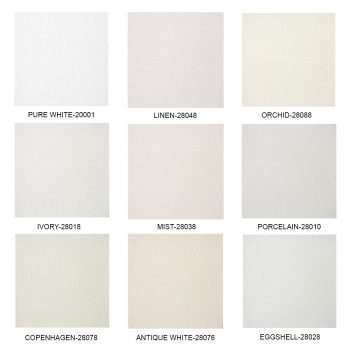
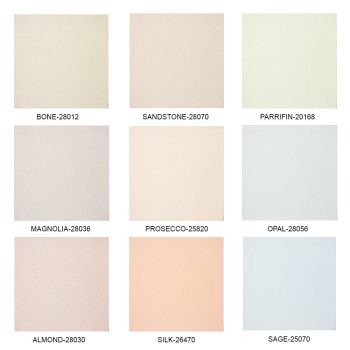
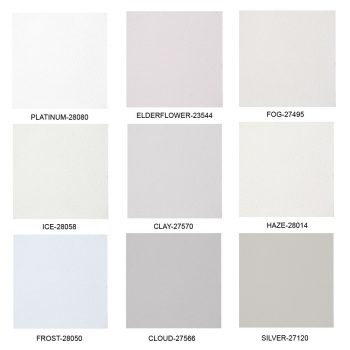

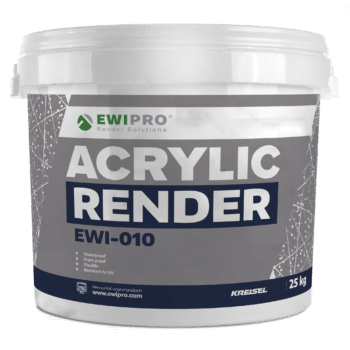
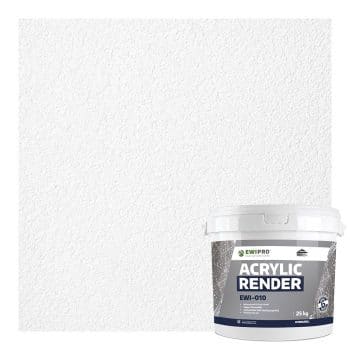

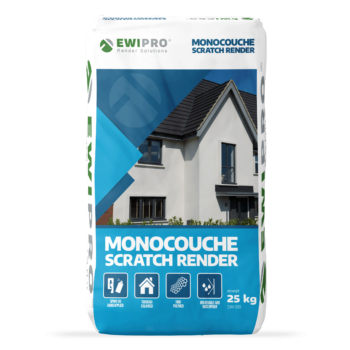
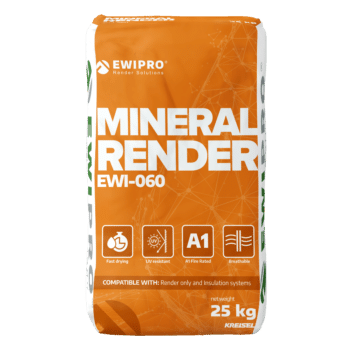
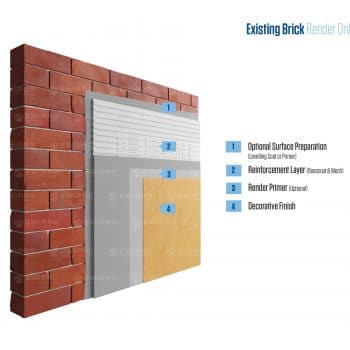
2 thoughts on “How Much Does Rendering Cost in 2024?”
I’ve got a 2 bed detached house, what would be the cost for EWI and silicone for that?
Hi Victoria, rough estimate would be around £10,000 – £15,000 depending on the type of insulation boards and silicone render chosen.